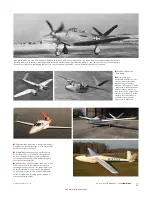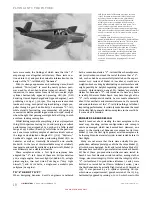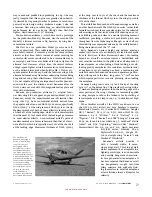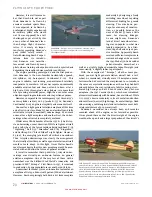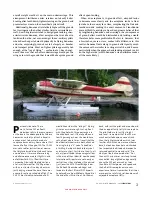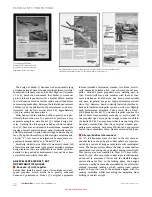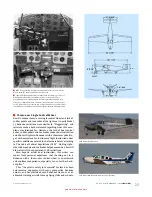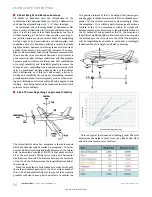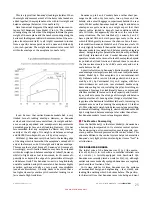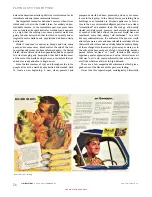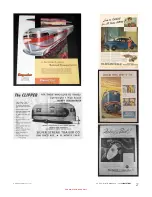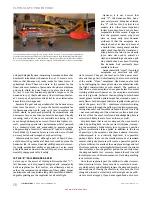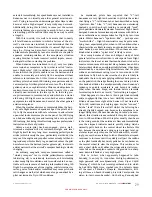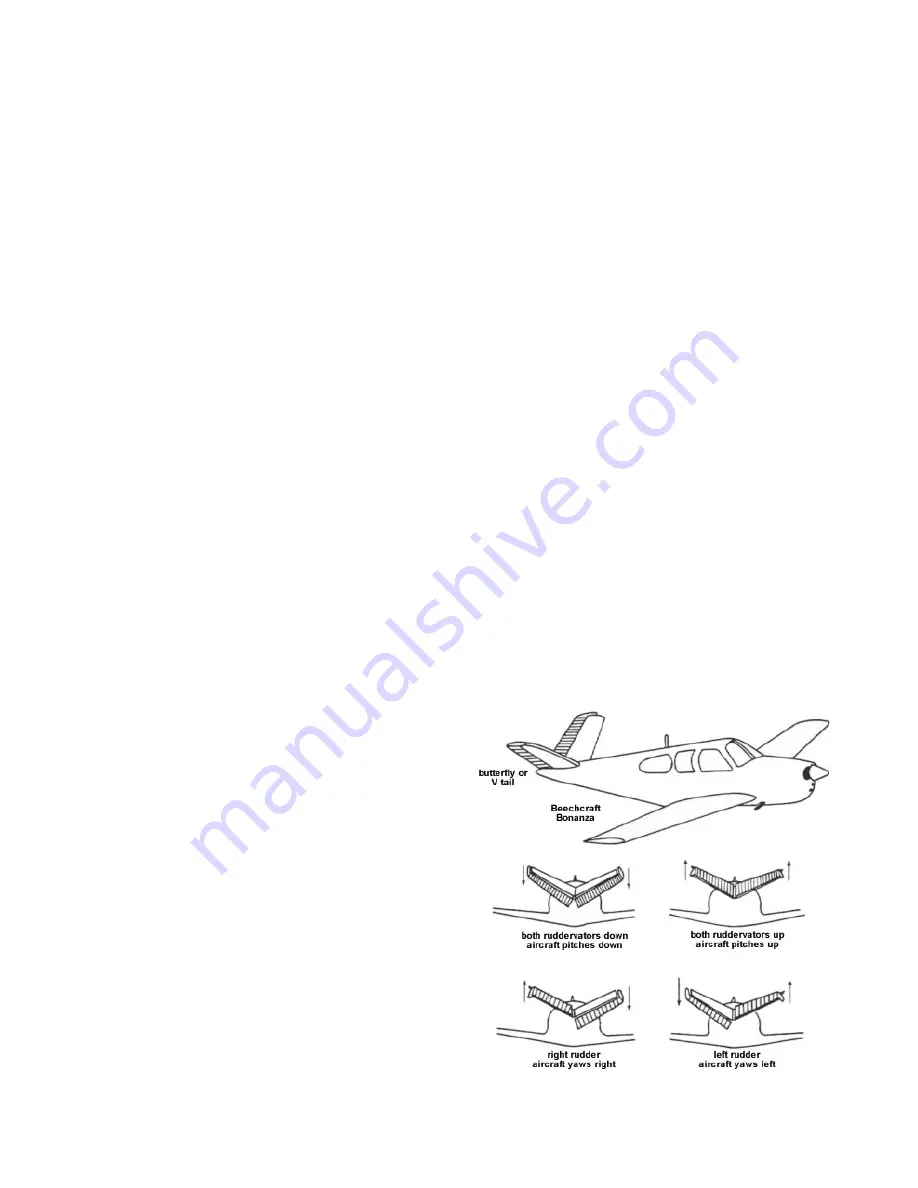
14
A2A
SIMULATIONS :::
ACCU-SIM V35B BONANZA
FLYING INTO THE FUTURE
FOR SIMULATION USE ONLY
elevator at its trailing edge, often split into left and right
horizontal stabilizer/elevator units acting in unison, one on
each side of the rearmost end of the fuselage. Accordingly,
the position of the rudder affects the yaw axis and is con-
trolled by the pilot by pushing the left (left yaw) or right
(right yaw) rudder pedals in the cockpit. The position of the
elevator affects the pitch axis and is controlled by the pilot
by either pushing (nose down) or pulling (nose up) a control
stick or a yoke. Conventional rudder and elevator control
surfaces are completely independent of each other.
On a “V”- tailed aeroplane, however, the rudder and ele-
vator are not separate and independent control surfaces.
Instead, the moveable control surfaces at the trailing edge
of the two tail surfaces, the ruddevators, act just as the
name indicates, each one controlling both the yaw and pitch
axes simultaneously. A fairly complex system of rigging the
ruddervators permits a pilot to fly a “V”- tailed aeroplane
exactly as he or she flies a conventional- tailed aeroplane
using normal rudder pedals and control stick/yoke inputs.
Note: What follows is a description of the operation of an
aeroplane’s movable control surfaces where these surfaces
are located at the rear of the aeroplane and does not apply
to aircraft with elevators ahead of the wing (canard) or air-
craft equipped with elevons or ailevators (elevator and aile-
ron operating in a single control surface as found on many
“Delta” winged aircraft).
ELEVATOR/PITCH CONTROL
The following drawings show the control surface move-
ments and tail forces for “V”- tailed aircraft when the stick/
yoke and rudder pedals are operated as viewed from the rear.
As shown, because the control surfaces are offset from
horizontal and vertical, the forces created when the rudder-
vators are displaced are similarly offset.
individual would plan for his company to enter a new and
unknown aviation market with the most advanced and
expensive aeroplane of the lot? Whilst Beechcraft would
eventually see the efficacy of producing less sophisticated
and less expensive aircraft (see endnote 4,) this first post-
war Beech was intended to come out of the box firmly sit-
ting atop of the aviation mountain, confidently and reso-
lutely daring all comers to topple it. As history has shown,
despite a most valiant but ultimately failed effort by Piper
to do just that with its superb PA- 24 “Comanche,” no aero-
plane, so far, has quite been able to do so.
WHY “BONANZA”?
5
In Walter Beech’s own words in 1946, “Airplanes have been
named after stars, galaxies, constellations, animals, fish,
birds, and natural phenomena such as hurricanes, lightning
and thunderbolts. For our new Model 35, Beech Aircraft has
sought to find a name that would be descriptive of the extra
value offered in the way of economy, performance, and
pleasure to the owner. We examined the word ‘Bonanza’,
which in English has a common meaning of a rich source of
profit or gain or an unusual value.”
Whilst there is no evidence to the contrary that Mr. Beech
sincerely intended that owners of his new aeroplane would
feel that they had indeed purchased a “bonanza”, I think that
we may be forgiven if we strongly suspect that he sincerely
intended that his new aeroplane would be a “bonanza” for
Beech Aircraft as well – and so it has been on both counts.
Additionally, Mr. Beech said, “We found that it (‘bonanza’)
... also has an additional meaning of ‘fair weather’ in cer-
tain foreign languages.”
In Spanish and Portuguese, “bonanza” means prosperity,
success and fair weather;
In French, “bonance” means calm, tranquil and smooth
seas.
In Italian, “bonaccia” means prosperity, calmness and
tranquillity.
THE “V”
During WWII, as aeronautical engineers in Great Britain and
the United States began to think about how the airspeed of
currently operational aircraft might be increased, the idea
of using a “V”- tail as a replacement for a conventional tail
arrangement was raised. “V’- tail was not, however, a new
concept at that time.
The first “V” or “Butterfly” tail surface arrangement (an
aircraft tail- surface configuration combining rudders and
elevators into two, single control surfaces called “rudder-
vators” was invented and patented in 1930 (Patent Polksi #
115938) by Polish pilot and aeronautical/aerospace engineer
Jerzy Rudlicki (14 March 1893 – 18 August 1977.)
(For the purpose of this discussion, the term “rudder-
vator” will refer to each separate “V” surface as well as to
the hinged, movable control surfaces at their trailing edges)
A conventional- tailed aeroplane has one or more vertical
fins with a hinged, movable rudder(s) at its (their) trail-
ing edge and a horizontal stabilizer with a hinged movable
Summary of Contents for BONANZA ACCU-SIM V35B
Page 1: ...A2ASIMULATIONS BONANZA ACCU SIM V35B BONANZA ...
Page 3: ...A2ASIMULATIONS BONANZA ACCU SIM V35B BONANZA ...
Page 5: ...www a2asimulations com ACCU SIM V35B BONANZA A2ASIMULATIONS 5 FOR SIMULATION USE ONLY ...
Page 27: ...www a2asimulations com ACCU SIM V35B BONANZA A2ASIMULATIONS 27 FOR SIMULATION USE ONLY ...
Page 58: ......
Page 68: ...68 A2ASIMULATIONS ACCU SIM V35B BONANZA www a2asimulations com FOR SIMULATION USE ONLY ...
Page 112: ......

















